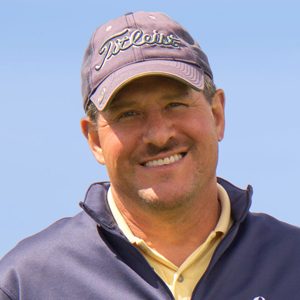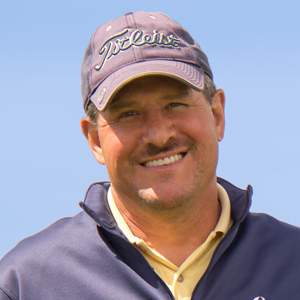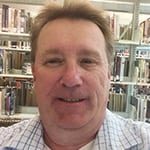
Home » Columbia Point golf course earns conservation award
Columbia Point golf course earns conservation award

April 15, 2019
Carl Thompson loves what he does.
As the superintendent at Columbia Point Golf Course, it’s
his mission – and his staff’s job – to make sure the course is in great shape
for the region’s golfers, who played close to 46,000 rounds on the Richland
course last year alone.

At the same time, Thompson and his team – assistant
superintendent Gerry Hyde, Steve Dickman, Shawn Steadman, Greg Ludwig and Scott
Kossac – make the course as environmental friendly as possible.
So much so, that Thompson received the Natural Resource Conservation Award during the Environmental Leaders of Golf Awards at the Golf Course Superintendents Association of America convention during the winter.
“This is a staff award,” said Thompson, who has been at
Columbia Point since August 2004. “It’s a reflection of them. (The award) is
good for the golf course, the city and management.”
Thompson also won chapter awards in 2016 and 2017.
He said almost all courses around the region do a lot of the
same things.
According to the 2018 GCSAA’s report, “Columbia Point Golf
Course, owned by the city of Richland, is a vital attraction on the city’s
waterfront. Water conservation and management are key concerns, given the
course’s proximity to the Columbia and Yakima rivers, as well as its desert
climate, which receives less than nine inches of precipitation per year.
“Thompson’s irrigation system and weather station allow for
exact water replenishment, while the use of wetting agents and night watering
have cut water use even further.”
Thompson has done the math, making sure the right amount of
water is used and the rest is never wasted.
“There is no soaking the course. No more than eight minutes per
sprinkler head per night,” he said. “I’d rather the course play firm and be
environmentally conscious than the other way. We put up with some turf loss
during the summer.”
Thompson added that the big mounds of grass (for which the
dirt was hauled in when the course was reshaped more than 20 years ago) are the
toughest area to maintain.
“You can’t keep the moisture on them without overwatering,”
he said. “This is 90 acres of rough out here. They built this as a park land.”
Eventually, the city will want to re-do the irrigation
system.
“It’ll be an expensive project,” Thompson said. “But it
would be nice to see some fescue around the bunkers and tees.”
The GCSAA report also cited Columbia Point’s “commitment to
pollution prevention through safe use and storage of inputs, fuels and
hazardous materials prevents ground contamination.
The course’s intentionally designed minimum-12-foot no
spray/no-mow buffer strips protect ponds. In addition, Columbia Point’s energy
conservation program aims to reduce consumption by 6 percent every year.”
Another big key is wildlife management around the course.
“Wildlife and habitat management is also a focus at Columbia
Point, where 2,000 square feet of wildflowers have been established to attract
pollinators,” the report continued. “Nesting areas for the local population of
painted turtles was improved with the addition of sand along shorelines and
logs in two ponds.”
Thompson said the course re-introduced the turtles about
five years ago, when Sun Willows in Pasco donated a few. They’ve been thriving
at Columbia Point since.
“We put out some
sunning logs and concrete pads on the pond by No. 1,” Thompson said. “The
turtles like to lay their eggs in the sand bunkers. So we added sand along the
shoreline of the pond there. The turtles’ numbers have grown in the last few
years to about a dozen.”
Thompson said his team also produced bat boxes on holes No.
1 and 14.
“That’s a natural way to help limit insects around the
course,” he said.
The team’s biggest problems are the geese that like to hang
around the course.
To that end, they’ve developed what they call a goosenator:
a radio-controlled plane that chases them off.
“It’s painted in orange because they don’t like orange,”
Thompson said. “They don’t like it at all. They eventually come back. But there
is not nearly as much poop now.”
In addition, Columbia Point is a
certified Audubon cooperative sanctuary. There is a stretch of three acres
between the No. 5 hole and Interstate 182 that is off limits to golfers and
designed for wildlife.
“We have signs that they can’t go in there to get their golf
ball,” Thompson said.
Periodically, Thompson’s team helps host elementary school
field trips.
“We’ll do water testing, soil texture analysis, have a golf
station and a foot golf station for the kids,” Thompson said. “We want to show
them that golf courses are not just elitist. We use science and math here.”
And they use it all the time.
“I went to the University of Washington,” Thompson said. “My
dad is a retired mechanical engineer for Boeing. My brother is a mechanical
engineer at Boeing. I knew I wanted to use math and science, but I didn’t want
to be inside an office all day. I wanted to be outdoors.”
As a golf course superintendent, Thompson must have
knowledge in a lot of subjects: plant science, recreation management, turf
grass science, landscaping, horticulture, human resources and budget
management.
“There are so many factors involved in
this job,” Thompson said. “For the most part, I love the challenge of making
this course better. I love going out and golfing on it, and I love seeing our
product.”
Local News Environment
KEYWORDS april 2019




